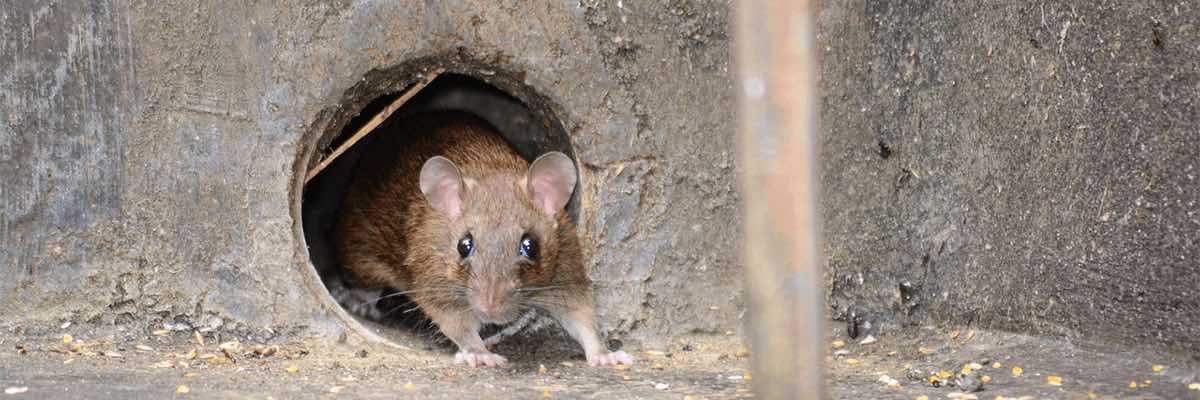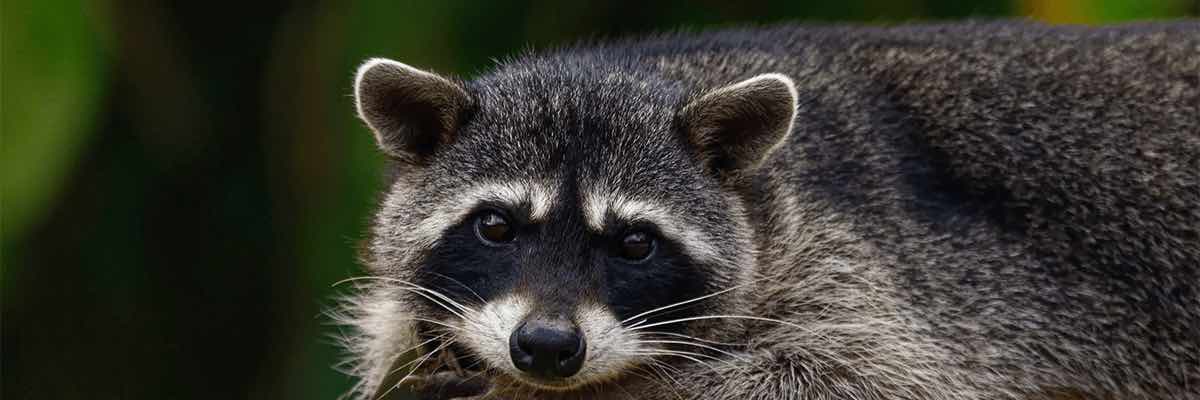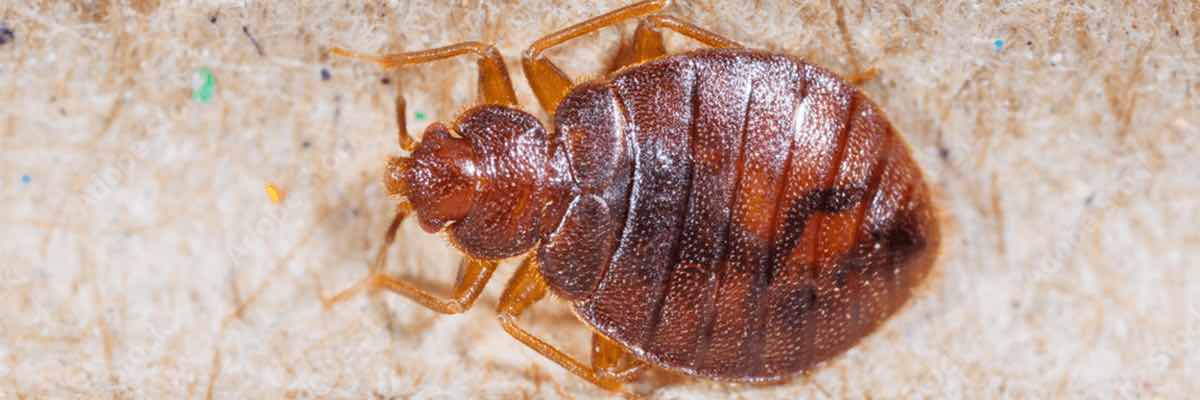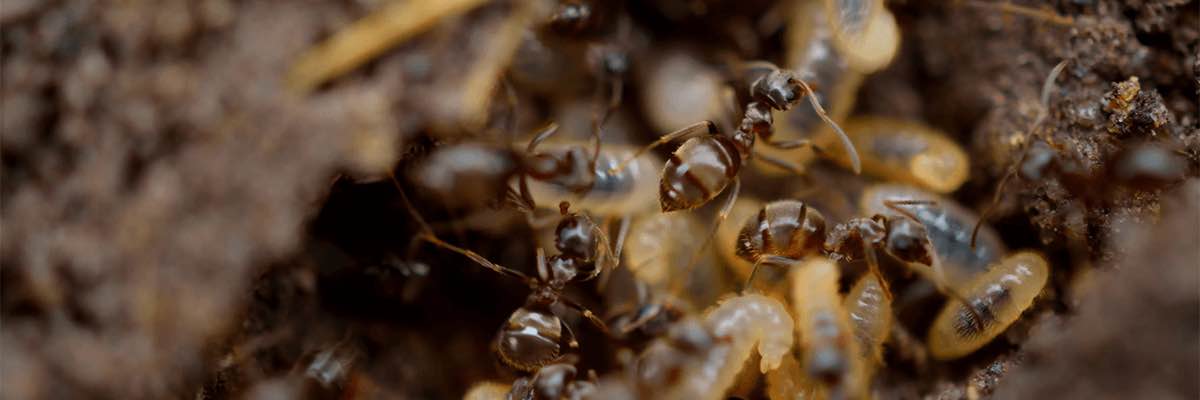The ultimate guide to pest control pricing

Anyone who’s had a major infestation in their own home knows the value of an experienced exterminator.
As an exterminator, you have the knowledge to deal with a large variety of unwanted pests that sneak into homes. Not every job requires the same treatment, so it’s important to have a pest control prices list to help you estimate the job right every time.
But if you don’t already know the average price for pest control jobs, you’ve come to the right place. After reading this guide, you’ll know:
- The factors that influence pest control costs.
- How to calculate the cost of a pest control job.
- The difference between residential and commercial pest control prices.
- How to create pest control estimates that keep customers coming back.
What factors influence the cost of pest control?
A general pest control prices list is a great resource for both you and your customer. You probably won’t price two jobs identically, but after putting it to the test, a list of pest control services prices serves as a point of reference and will let you know the minimum that you should be charging for a job.
But before getting into specific prices, you need to know what exactly will determine the prices on your list. Pest control is a complicated process, so there are many factors that will influence how you price your jobs.
Let’s get into those factors to help you determine the best way to price your pest control jobs.
Type of pests
Drawing from our experience, the type of pests you’re dealing with will determine every other factor of the job you are contracted to complete. Once you know what kind of pests you’re dealing with, you can determine:
- The type of treatment necessary.
- Materials and supplies needed.
- The number of visits required.
Two of the most common pests you will encounter as an exterminator are cockroaches and rodents.
Cockroaches

Cockroaches are very common pests that many exterminators deal with on a daily basis.
It’s important to address a cockroach problem as soon as possible because they carry bacteria that can cause illnesses such as typhoid and dysentery.
Like many insect pests, cockroaches are hard for homeowners to eliminate on their own because they have to be dealt with quickly, as it doesn’t take much time for them to multiply.
On average, our research indicates that the cost of cockroach extermination is $120 – $160.
Rodents

Mice and rats often live in piles of wood and leaves in unkept backyards but are attracted to the warmth and pantry food found in houses. Once they’ve nested inside a home, they can become a huge pain to get out.
These rodents leave behind dropping, spread disease, and can even cause allergic reactions. Rats in particular can become very large, making them a frightful sight for many people.
Rats and mice can even chew electrical wires and eat through drywall, leading to fire hazards and expensive home repairs.
Although many homeowners are able to deal with the odd mouse in the kitchen on their own, if they begin to take over the home, the extensive experience of an exterminator such as yourself becomes necessary.
Average pest control prices for mice extermination range from $150-$200.
It is important to determine the type of pests you’re dealing with as a first step, as this is what determines the type of service and treatment you propose to your customer.
Types of pest control service
Different pests need different treatments, which means different costs that you should outline in your pest control prices list.
Typically, protection against household pests like spiders and roaches is a standard service that most pest control businesses offer at a standard price.
On the other hand, controlling more invasive pests such as termites and rodents requires more advanced techniques and equipment.
Here are the types of pest control services you may offer your customers.
Wildlife removal cost

Wild animals in the home are not only annoying, but they can also pose a dangerous risk.
Through our practical knowledge, not every pest control company offers wildlife services, as removing wildlife requires specialized skills. But, if your business does, you need to price the service right.
Our findings show that the price of wildlife services ranges from $150 – 500, with the average visit costing $250. Depending on the type and size of the pest, wildlife removal can cost upwards of $1,000.
Bed bug exterminator cost

Bed bugs are some of the most difficult pests to get rid of. They can hide in small cracks and survive a long time without food or water. This makes them one of the most expensive pests to treat, especially because fumigation is often involved.
You could end up charging your customers anywhere from $1,000 – $2,500 to exterminate bed bugs. Based on our observations, the cost is mainly determined by the size of the home and the extent of the infestation.
Termite treatment cost

Termites can literally eat a house, causing major structural and property damage. Our investigation demonstrated that there are even species that feed on the trees around your home as well. The cost of termite treatment depends on a number of factors, such as:
- Size of the colony.
- Type of termite.
- Location of the colony.
- The severity of the damage.
Depending on these factors, our research indicates that the cost of termite treatment ranges from $200 – $900, with the typical treatment costing $560. As with other pests, the type of treatment you use will determine the cost of termite extermination. The types of treatments you may consider using are:
- Chemical treatments.
- Bait treatments.
- Tenting.
- Fumigation.
Pest control monthly cost
If there’s a one-off issue, one-time extermination could be the solution that your customer needs. However, based on our observations, the frequency of pest control necessary really depends on the extent of the problem. If your customer is living in an area prone to ticks, ants, and other extra stubborn pests, then you may need to pay them several visits.
Average monthly pest control cost
Calling an exterminator can be costly on a per-visit basis, which is why many professionals offer monthly or yearly protection plans.
Our findings show that the initial assessment will cost anywhere from $160-$300 on average. Ideally, homeowners should schedule assessments for their houses at least once a year.
From there, many exterminators set prices based on the client’s specific needs. This usually costs anywhere between $400-$1000 for the entire year’s coverage, with monthly or bi-monthly visits already rolled into the final cost.
Number of visits
In most cases, you will be charging your customers for your services per visit, but if you are completing a job that requires several visits, you may want to explore other pricing options.
One-time visit
Depending on the problem, a job that requires a one-time visit typically costs $300 to $550. These are the easiest prices to outline in your pest control prices list.
Be sure to explain to your customer the process and the time it will take to assess the situation.
During this first visit, you might discover that the job requires several additional visits, at which point you can consider it an initial visit.
Initial visit inspection
If you know from the beginning that the job will require several visits, then an initial visit is necessary.
Pests that usually requires ongoing visits include:
- Roaches.
- Spiders.
- Termites.
- Ticks.
- Rodents.
Our findings show that an initial visit is about $180 and is the first of an ongoing contract. The initial visit is where you do the investigating that will help you figure out a solution.
During this first visit, you should:
- Assess the problem.
- Locate the entry point and nest.
- Create an extermination plan with your customer.
- Outline a schedule for future visits.
Periodic visits
If you have a customer who requires or requests frequent visits, it’s a good idea to set up a contract with them.
Contracts can be for a set period of time or ongoing. Examples of contracts include:
- Quarterly contract.
- Yearly contract.
- 12-month contract.
In general, the frequency of periodic visits is:
- Every month: $40 – 45.
- Every two months (semi-monthly): $50 – 60.
- Every three months (quarterly): $100 – 300.
Materials and supplies used
Pest control is a chemically-intensive business. After all, chemicals are the key materials that exterminators use to complete a job. Common chemicals include:
- Boric acid.
- Fipronil.
- Hydrramethon.
- Pyrethrins and Pyrethroids.
Having the chemicals you need will be a determining element in your business’s success. Make sure you factor the cost of these chemicals into your pest control prices list and don’t forget to factor in the cost of supplies required for clean-up.
Based on our firsthand experience, using the right tools is just as important as using the right materials. Different pest control services may require specialized equipment, such as lawn care insect control. Essential materials and supplies you’ll use include:
- Respirator.
- Sprayer.
- Gloves.
- Duster.
- Foamer
- Baiting tools.
- UV light.
- Other safety equipment.
It’s important to have all of the right tools before starting a job. Your tools should be included as part of your overhead costs.
Labor costs
If you have employees, then labor costs are going to be the biggest expenses for your business. You need to keep up with factors such as:
- Salaries (hourly rates).
- Benefits.
- Taxes.
As per our expertise, the way you price your jobs is not solely based on labor, but it will play a large part in the price. The more labor or workers a job requires, the higher it should be priced.
You can either factor labor into your total price, or present it as a line item in your estimate.
Location
For the most part, pest control prices don’t greatly vary by location, but there are some exceptions.
For example, a wealthy neighborhood would have bigger homes, requiring more work to cover the extra square footage, resulting in higher costs.
If a customer is outside of your standard service area, you may charge travel fees to cover travel costs.
Average cost for home pest control
When clients hire exterminators to treat their homes, they usually look for one-time services or yearly plans for ongoing protection.
Our investigation demonstrated that one-time visits usually cost a little more because you’ll have to conduct your entire assessment and analysis of the issue and provide a solution in one go.
On average, these one-time visits cost between $250-$400 for mild cases, but this number can quickly climb based on the kind of pest plus the existing damage and infestation levels.
For example, ants, fleas, moths, and silverfish treatments can cost anywhere from $100-$500, while procedures for bed bugs, termites, and wood-boring beetles can easily crawl into thousands of dollars.
Yearly pest control cost
Drawing from our experience, if your client’s pest problem requires more time and care, you may need to prepare a yearly pest control plan to manage the issue properly. In this case, pricing can be slightly different from the norm because of the predictable schedule plus more time to assess the damage thoroughly.
Generally speaking, basic coverage plans can cost up to $1000, with extra charges occurring once an exterminator has identified a major issue. If this is the case, your client may have to shell out more cash, which will still amount to less than paying for individual visits.
How to calculate pest control cost estimates
Before you even think about prices, you have to do a walkthrough of your customer’s home. This is to make sure that the problem they described is in fact the problem you will be dealing with.
As per our expertise, once you’ve done a walkthrough and know what type of pests are present, you’re ready to figure out how you are going to charge for the job.
You should be able to estimate an initial price based on the pest type. This is where having a pest control prices list comes in handy.
From there, you have to calculate how much time the job will take to complete, based on the severity of the infestation. This will help you determine the cost of labor, which you then add to your estimate.
Our investigation demonstrated that the severity of the problem will also determine the materials you use, including the number of chemicals.
Decide whether it will take more than one visit to fix the problem, as the frequency of visits may not only affect the price but the billing as well. The less often you visit, the more each visit will cost.
Although most pest control companies don’t usually price by square footage, you should still use logic to determine how the size of the space may affect the price.
Treating an entire 3,000-square-foot house requires more material than treating a single room. Essentially, the bigger the space, the more expensive the treatment will be, even if not by a lot.
Once you’ve taken into account all of your cost factors, add any additional costs such as travel fees to get your final price. Don’t forget to markup for profit!
Commercial pest control cost per square foot
Our findings show that most exterminators don’t usually price their services based on the property’s square footage, but the overall size of the service area is still relevant. So, for example, you would not be charging the same amount for a multi-level building versus a single store in a strip mall.
With this in mind, commercial pest control services are usually more expensive than residential plans. Therefore, exterminators need to take extra precautions when preparing the service area. On average, commercial spaces can cost up to $1000 more than residential services.
How to format a pest control quote
When you present a quote to your customer, they will most likely first look for the final total. However, it is important to include a description and a breakdown of costs in your estimate so that your customer may understand the full extent of your services.
Once you’ve consulted your pest control prices list and figured out all of your numbers, you should present your estimate to your customer with all of the information they need.
As indicated by our tests, here’s what you should include in your pest control quote.
- Name of your business and contact information.
- Date.
- Quotation number.
- Description of services.
- Breakdown of costs (labor and materials).
- Sales taxes, if applicable.
- Total cost.
Based on our firsthand experience, making your estimate clear and easy to read demonstrates transparency and will have a positive impact on your customer.
Templates are useful, but with our invoice generator, you can ditch the manual work entirely. Just create, download a professional PDF, and watch the payments roll in.
Pest control cost estimate FAQ
- How to set commercial pest control costs per square foot?
- How to estimate preventive pest control costs?
- How much does one-time pest control cost?
- How much does a bug exterminator cost?
- How do I price pest control services?
- How much should I pay for pest control?
How to set commercial pest control costs per square foot?
Pest control prices are not usually determined by square footage, but that doesn’t mean that size doesn’t matter.
One of the first things that will help you determine how much you’ll charge for your pest control services is the size of the building that you are treating. A residential basement and a multi-story commercial space each need a different amount of labor and materials to complete a job.
This is where the difference between commercial and residential pest control prices becomes apparent.
There are circumstances where the square footage of a building can be beneficial when coming up with your prices, such as in large commercial buildings.
Based on our observations, you can separate your pest control prices list into three size categories to keep it simple:
- Less than 2,500 square feet.
- 2,500 – 5,000 square feet.
- 5,000+ square feet.
You can always modify your prices based on the space, but this gives you a great jumping-off point to price your services.
How to estimate preventive pest control costs?
Preventive pest control is a great investment for homeowners, especially those in areas that are prone to certain seasonal pests. Keeping up with pest control in both the summer and the winter will keep unwanted critters out all year.
We determined through our tests that the the benefits of preventative pest control include:
- Recognizing potential infestations.
- Stopping infestations early.
- Preventing damage from pests in your home.
- Long-term savings.
- Peace of mind.
You could offer preventative pest control as part of an ongoing contract. Depending on the length of the contract and the frequency of the visits, our research indicates that each visit could cost anywhere from $30-$300 or you could suggest a pest control yearly cost.
The average cost of pest control services
Overall, the national average cost for pest control service is $135 – $200 per visit. The wide average range accounts for the wide range of pests that homeowners have to deal with.
Keep in mind that these prices are averages and that they may not be the right prices to bring in revenue for your business.
Factors that will affect the prices you set include:
- Type of pests.
- The number of visits required.
- Visit frequency.
- Size of the treated space.
Creating a custom pest control prices list will help give you a starting point when pricing each new opportunity that comes your way.
How much does one-time pest control cost?
Our research indicates that one-time pest control visits can cost anywhere from $300-$700, although this usually varies based on the client’s specific problem. For example, severe infestations with serious structural damage can run well into thousands of dollars, especially if you’re dealing with termites.
On the other hand, managing small colonies and burgeoning pest populations is relatively straightforward, which means it’ll cost less overall. That said, one-time pest control services are usually costlier than yearly protection plans because exterminators must diagnose and manage the pest problem in one visit.
With this said, these aren’t the only factors impacting the costs of a one-time extermination visit. Most pest control services will also take note of the area around the house or commercial space that needs to be managed. In addition, prices may climb for more aggressive treatments if the site is prone to pest infestation.
However, the opposite is also true. Areas that don’t usually experience issues with pests or bugs typically cost less to maintain and manage. That’s because there’s a lower likelihood of the problem returning once the building has been treated.
How much does a bug exterminator cost?
After putting it to the test, iring a bug exterminator can cost anywhere from a hundred to a thousand dollars, depending on your problem’s seriousness.
These prices can vary based on a few factors, such as the type of session (one-time, monthly, or yearly), the pest that needs to be dealt with, and how big the infestation is.
For example, termite infestations can cost much more than simple ant or cockroach problems. Similarly, exterminator visits usually cost less when part of a yearly maintenance plan. Here’s a table containing a few rough estimations for how much different kinds of sessions will cost:
- Monthly pest control visits:$30-$250.
- Quarterly pest control visits: $100-$300.
- One-time pest control visits: $250-$530.
- Initial pest control visit (for plans): $80-$200.
Likewise, it’s important to note that prices can vary quite a bit based on the type of infestation the client is dealing with. Here are the average extermination prices based on pest type:
- Ants: $120-$600.
- Bed bugs: $350-$5000.
- Moths: $170-$400.
- Fleas: $150-$400.
- Silverfish: $120-$400.
- Beetles: $1000-$5000.
- Termites: $2000-$8500.
How do I price pest control services?
Pricing a pest control service as an exterminator is simple once you understand which factors impact your overall costs.
- Type of pests in the service area: The pests in a house or commercial space are the number one cost-determining factor. This is especially true when the specific pest-related problem requires additional products and care.
- Size of service area or home: Larger service areas will naturally cost more, especially since exterminators must check every crack and crevice for signs of infestation.
- Yard size (if relevant): If a client wants to build a protective outer barrier in their yard, pest control companies will need to know the rough square footage of the area. The larger the space, the more materials and labor are necessary. The natural result is a higher overall cost.
- General location: If a house is located outside a company’s service area, clients will have to pay a “travel fee” on top of existing costs.
- Visit frequency: When signing up for a yearly plan with a pest control company, opting for quarterly over bi-monthly schedules can save hundreds of dollars in the long run. After all, more visits generally mean more cash spent.
How much should I pay for pest control?
The amount you can expect to pay for pest control depends on your main issue and your existing protection plan, if applicable.
As we mentioned earlier, the cost of a proper pest control session can vary from hundreds to thousands of dollars. However, the price of general maintenance and implementing preventative measures is much more predictable. Even then, these basic amounts differ based on the type and frequency of the visit.
With that out of the way, here are a few rough estimates of general pest control visits:
- One-time visits: roughly $135-$300 per visit
- Monthly visits: $40-$200
- Quarterly visits: $100-$400
- Initial assessment visits: $40-$150 depending on the complexity of your issue
Of course, these rates do not apply to every service provider. For example, some pest control companies with a longer service record may charge more, while other newer alternatives can afford to ask for less.
Image credit: Andrey Popov via Adobe Stock



